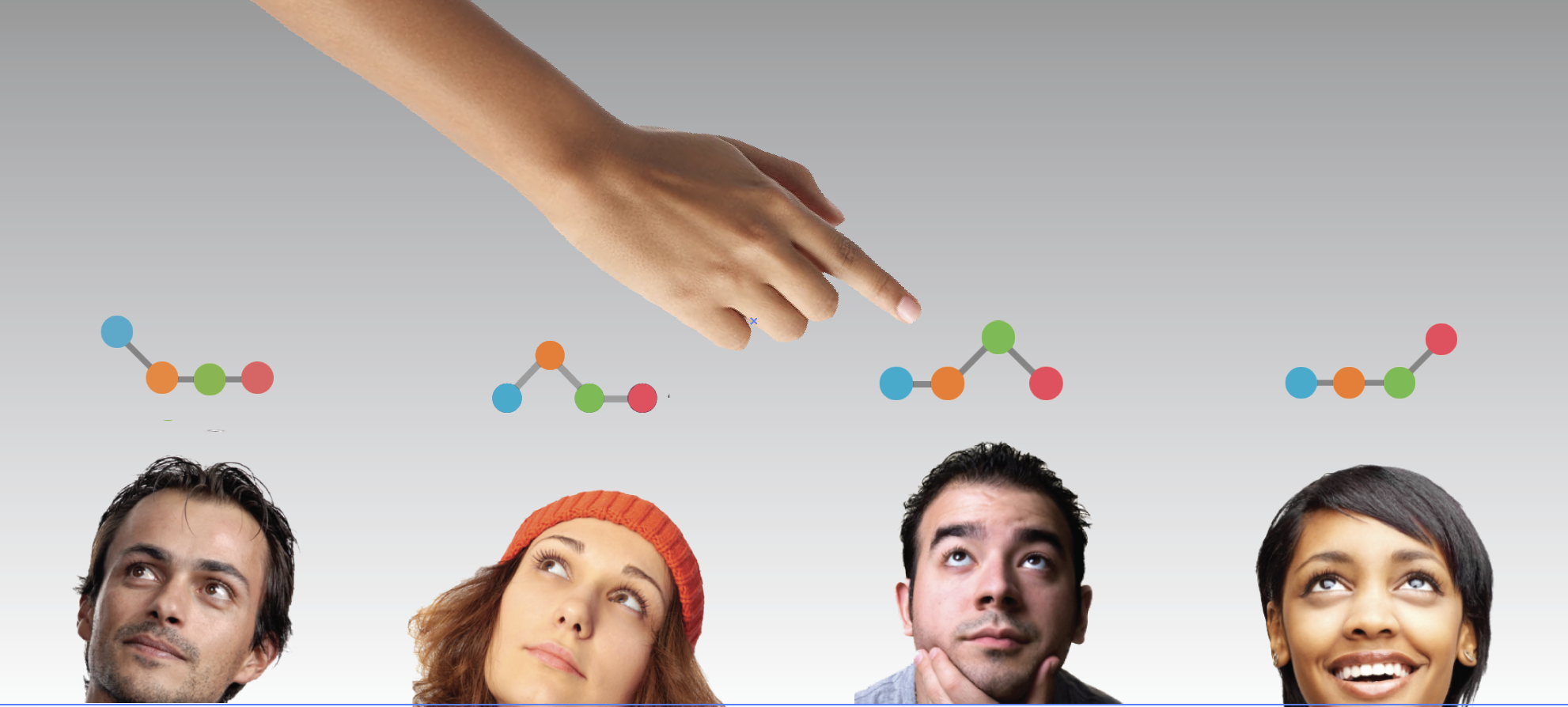Recently a FourSight facilitator wrote in the following question: Can I use FourSight profiles for hiring? —Harry
Dear Harry,
Your simple request demands a thoughtful response.
Research shows that jobs attract different FourSight profiles. You’ll find a lot of Clarifiers in finance, Ideators in advertising, Developers in engineering and Implementers in sales. So it’s natural to wonder if you could use FourSight as a hiring tool. It would simplify a complex process.
But hiring is complex because people are complex. Using FourSight as your primary tool to choose whom to hire would be like drafting a pro baseball player based on whether he batted right or left handed. First you’d choose someone based on talent, teamwork and training. Then you might factor in handedness. Likewise, FourSight should not be used as a primary tool for hiring or selection.
FourSight measures people’s preferences—their natural “comfort zone.” But when you’re hiring, you also want to know people’s ability to change and adapt. When individuals have a task that falls outside their preference, can they rise to the challenge?
Most creative challenges demand multiple types of thinking (clarifying, ideating, developing, and implementing) and therefore succeed when individuals with diverse preferences collaborate. FourSight can tell you who has what preferences, but not about whether individuals play well with others, so this is also something to keep in mind when hiring.
Based on the thousands of people who have taken FourSight, we know that preferences are stable across time. But creativity and collaboration are skills and they can be developed. One-shot assessments don’t take into account an individual’s ability to learn over time. A better way to use FourSight would be to educate a new hire on the creative process: Clarify, Ideate, Develop, Implement. Discounting a potential hire based on their singular preference is short-sighted, especially if they’ve never been introduced to a deliberate creative strategy. This discounts their potential ability to grow and an opportunity may be missed—for both you and the applicant.
But what about that research that showing different profiles appearing in different jobs?!
We’re not ignoring it. We just found a creative way to let people match jobs with cognitive skills without the risk of pigeonholing people based on their profiles. Here’s how we do it.
Rather than say that a job requires a particular FourSight profile. (i.e. jobs in finance need Clarifiers and Developers), we say that a job requires a particular kind of cognition (i.e. jobs in finance often require a lot of clarifying and developing). The difference is small but mighty. It acknowledges that every job has unique cognitive demands, but it vests the power to choose the job in the individuals, not in the statistics.
Plus, even if a job tends to attract a certain preference (like Clarifiers and Developers in engineering), that’s not to say that we don’t need Ideator engineers. Take our son Cole, for example. Five years ago, he graduated from high school with his heart set on becoming an inventor with a biomedical engineering degree. Cole is an Ideator. Engineers tend to be high Developers and Clarifiers and low Ideators. We told Cole he would likely be spending his college career surrounded by people very different from himself. We worried he might feel misunderstood. We wondered if he could handle the cognitive demands of his study. Rather than try to dissuade him, we supported his choice. Cole wanted to be an inventor, and he wanted to study biomedical engineering to do it. At university, knowing his FourSight profile helped Cole manage the challenge of constantly working outside of his cognitive preference. He graduates in May with a biomedical engineering degree, and his inventions have already garnered national attention.
So before you rush to match people’s jobs with their profiles, resist the temptation to “paint by numbers.” Instead, communicate to potential candidates the cognitive demands of the job and let them choose. Many of the world’s biggest breakthroughs have come from people who see things differently from everyone else.




